Text

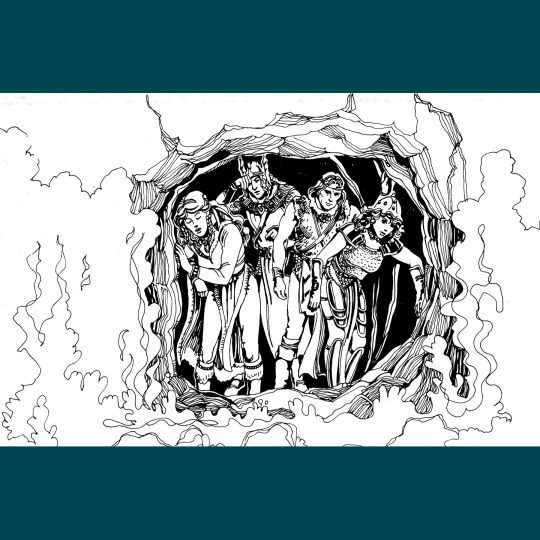

I’ve long been vexed by this cover painting by Jeff Easley (annoyingly, it is credited to Caldwell inside). It appears in the Art of Dragonlance and I could never parse it because it doesn’t line up with anything in the books, really. It lines up slightly with some stuff in here, and in the next adventure, but it still ultimately remains enigmatic for me. Perhaps entirely because I think the constellation watcher is supposed to be Paladine, but I can’t parse it as anything but “glowing tree man.” I dunno man, Dragonlance does weird things to my brain.
Anyway. DL13: Dragons of Truth (1986). Hickman’s last writing gig in the series. It amounts to exactly what it is, the thirteenth episode of a fourteen episode series. It’s all set-up. It tries hard to be clever, and often succeeds! But it is, nevertheless, set-up.
Basically, the players go to Paladine’s house to be tested. If they pass the test, they get the answer to some very big questions and an idea of how to defeat the dragon queen in the next module. The module uses the tarot cards to randomize the three potential tests and six different plot outcomes. Is Fizban actually Paladine? What’s the deal with the weirdo with the gem in his chest? And where is Huma? Pull a card and find out! Part of me feels like I should complain about this not being weighty or something, but I rather like it, honestly. Its a good way to randomize the end game of the modules (only one outcome exactly matches the novel, but I feel like at least three kinda sorta match the novel?).
I dunno. Sometimes the set-up is the best part? This is maybe my favorite of the DL-series? It’s all anticipation, it hangs together well and you don’t have to worry about resolutions, which almost always disappoint. It’s a module about possibilities. That’s cool, especially in a series that has been so choreographed to this point.
38 notes
·
View notes
Text


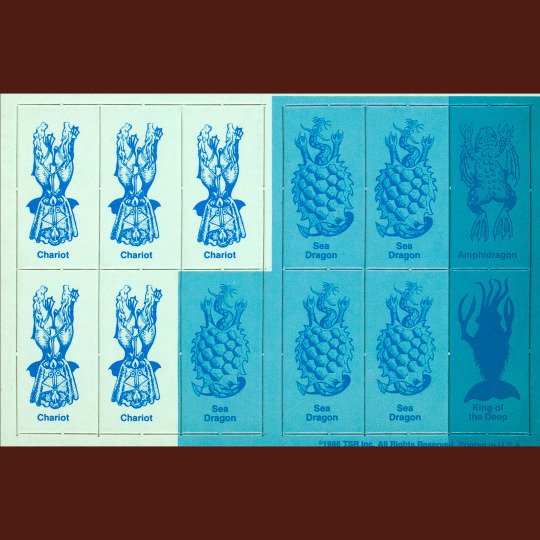
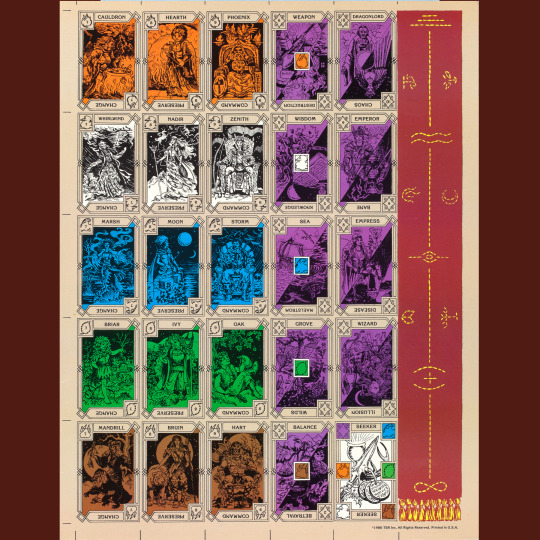

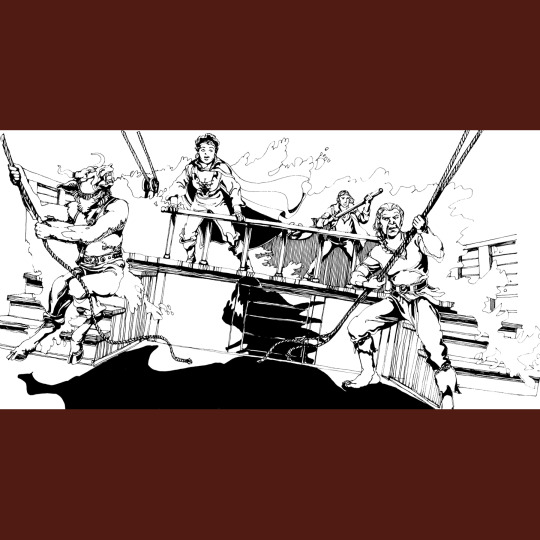

Right off a semi-non-sequitor strategy game, DL12: Dragons of Faith (1986) gets right into…another mass combat heavy scenario. Hooray. Again, there is a ton of stuff in the package — the module and its folder, a sheet of little tarot cards, die-cut chits for the Battlesystem bits, another big ol’ map. Borderline decadent product design, tbh.
The digression of DL11 aside, this picks up directly from the action of DL10. I don’t honestly know what novel we are mirroring at this point — my recollection of Spring Dawning is spotty, and these modules have never really reflected the novels with any great care. At least part of the action here is still in the tail end of Winter Night. There is a ton of stuff in here that isn’t in the books, for sure. I don’t remember Spring Dawning well, but I am SURE there wasn’t a gigantic underwater battle in it. Conversely, I am pretty sure there are character moments in the novels that aren’t reflected in the module, but I’ve already come to terms with that since Sturm is potentially still alive at the tabletop. At any rate, the game is structured like the previous installments — narrative heavy, with players really navigating a series of events more than a dungeon, city or wilderness. The formula does feel like it has become rather refined at this point (it better be, with nearly 60 events in the chain!) even if I don’t really love how it is brought to bear, if that makes sense.
The little tarot deck is interesting. In a way, it is a regurgitation from I6: Ravenloft: they get drawn and tell the players about specific things that are going on in the game. It’s…OK? I don’t feel like, thematically, they fit very well, but what do I know? They are used in the subsequent modules and, like, become the basis of a whole new game with SAGA System in the late ‘90s (which powered the Dragonlance Fifth Age game and a Marvel Super Heroes game).
61 notes
·
View notes
Text

Where does the game end and real life begin? This week on the Vintage RPG Podcast, we look at Gameplayers, Stephen Bowkett’s 1986 novel. At first blush, it seems to belong in that silly microgenre of panicky novels dedicated to wondering about how kids can cope with fantasy as powerful as tabletop RPGs (see Mazes & Monsters and Hobgoblin, both 1981). What we get, though, is a coming of age story in which a D&D-like game plays a prominent role in helping the grade-school protagonist deal with the increasing complexities of real life. And not in a corny After School Special way, believe it or not! The kids talk like kids, the game feels like a plausible game and the forays into fantasy are peppered with clever monsters and interesting encounters.
32 notes
·
View notes
Text



I have said before, and I guess will never stop saying, that I can’t quite wrap my brain around the DL-series adventures that make up the initial core Dragonlance experience. It meanders in surprising ways that, at least in this case, was probably expensive to produce. This is DL11: Dragons of Glory (1986). It isn’t an adventure module, but rather a strategy game that encompasses the entirety of the War of the Lance. It comes in a heavy cardstock folder, has heavy die-cut cardboard counters and two very big hex maps that display the entirety of the continent of Ansalon (which, admittedly, are pretty sharp); it doesn’t really look like any other ’80s TSR product.
I can’t really evaluate the actual strategy game without playing it, and I am not gonna do that. It looks…OK, neither particularly deep, no particularly lacking, laid out in just 8 pages. It gets the job done I guess. It also doesn’t mesh with any other of TSR’s available rules for mass combat (War Machine was in the Companion Rules in ’83, Battle System came out in ’85, the hybrid of both was in X10: Red Arrow, Black Shield in ’85, which amusingly, uses the bottom half of the painting that this module uses the top half of for its cover). It’s also distinct from the previous DL mass combat stuff (which was watered down Battlesystem, iirc), though I think all that was tactical rather than strategic? I guess all these things are tactical, now that I am thinking about it.
Regardless, sticking a strategy game in the series here, three modules from the end, seems odd. Did Dragonlance players really want this? Did it enrich the experience of the greater campaign? The action of the novels and the modules takes place in what is really a small portion of the overall war, so I can’t imagine using this as an integrated backdrop for the campaign, as the rulebook suggest. Aside of the fact that, like, most DL campaigns were 2+ years in when this dropped. I dunno. It’s strange.
#roleplaying game#dungeons & dragons#tabletop rpg#rpg#d&d#ttrpg#Dragonlance#Dragons Of Glory#DL11#TSR
53 notes
·
View notes
Text

Different Worlds 32 (January/February, 1984). Officially back to bi-monthly, and on the right pair of months even. Love it. Brad W. Foster and his airbrush back again. This one almost has a Terry Gilliam/Monty Python look.
#roleplaying game#tabletop rpg#dungeons & dragons#rpg#d&d#ttrpg#Chaosium#Different Worlds#Brad W Foster
38 notes
·
View notes
Text

Different Worlds 31 (November, 1983). Steve Purcell’s first Different Worlds cover. A solid action scene. I noticed them AFTER I finished photographing the magazines, but this issue has some cool early Mike Mignola fantasy art — worth seeking out on your own. Consider it VRPG homework.
#roleplaying game#tabletop rpg#dungeons & dragons#rpg#d&d#ttrpg#Chaosium#Different Worlds#Steve Purcell
39 notes
·
View notes
Text




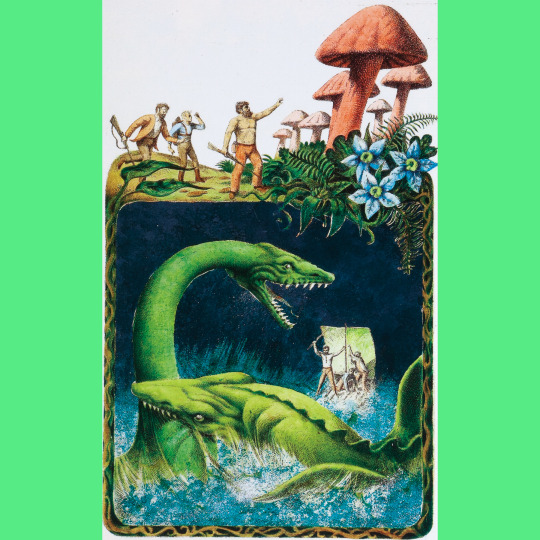
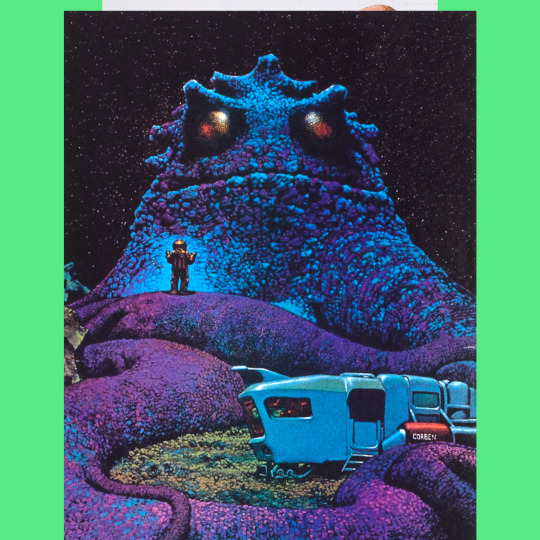
There is, I think, no arguing that contemporary genre art has a character distinct from previous decades. I also think that while there are big shifts in aesthetics somewhat aligning with each decade of the 20th century, here in the 21st things have definitely slowed down — I feel like the look of genre art has fossilized somewhat in the last 20 years. I don’t have a good explanation for why. Sometimes I wonder if I’m blinded by nostalgia, and that there really aren’t any obvious objective differences at all.
Worlds Beyond Time: Sci-Fi Art of the 1970s (2023) is a compelling argument, I think, that there ARE definite differences. The book, by Adam Rowe (and spinning out of his social media accounts dedicated to, well, ’70s science fiction art) looks at both artists and thematic categories of art from the period, mostly from paperback covers, and offers commentary and historical context in the text. The result is startling: a body of work by a variety of artists working in their own styles that nevertheless seems visually unified. With the exception of a couple outliers, this stuff all feels of the ’70s. The fact that there are some inclusions from both the ’60s and ’80s makes this even clearer.
I think the most interesting thing about this is how bizarre some of the ’70s art seems to be. A lot of these artists appear to be entirely off the leash, delivering work they WANTED to produce rather than what they were directed to produce (you can see a shift toward clearly pairing the cover art with the content of the book in the later part of the decade). There was also more money in the work, then, so speed wasn’t quite so big a part of the equation as it is now.
And, greater questions of genre art aside, Worlds Beyond Time is still a mesmerizing collection, worthy of your time even if you just want to feed pictures to your eyeballs.
172 notes
·
View notes
Text
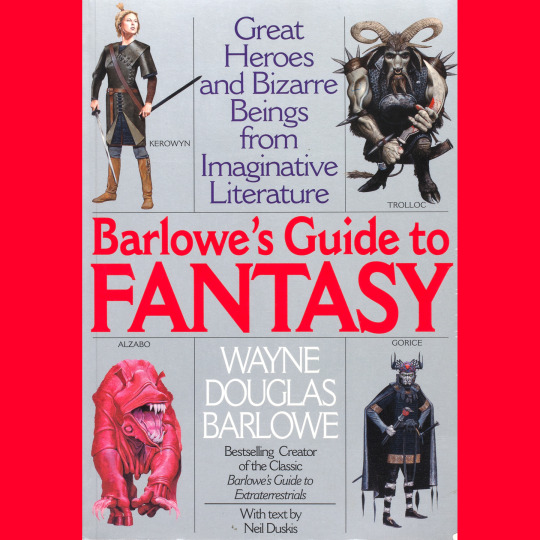
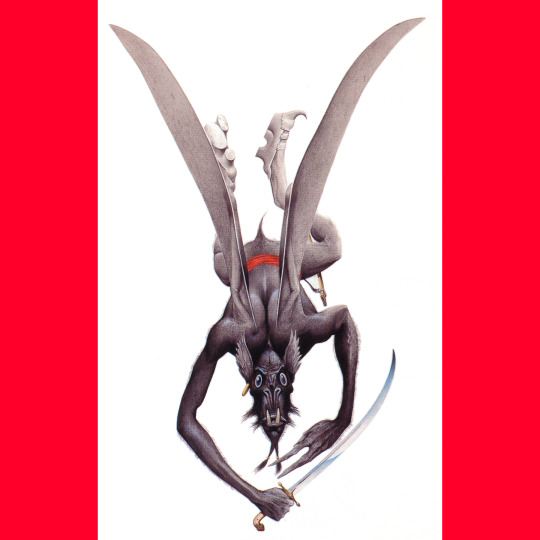
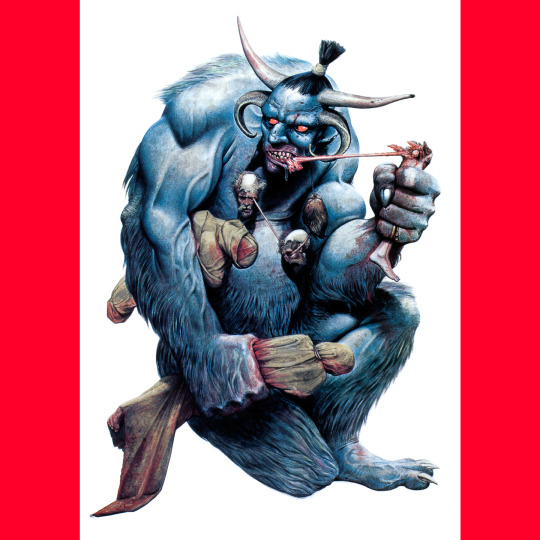
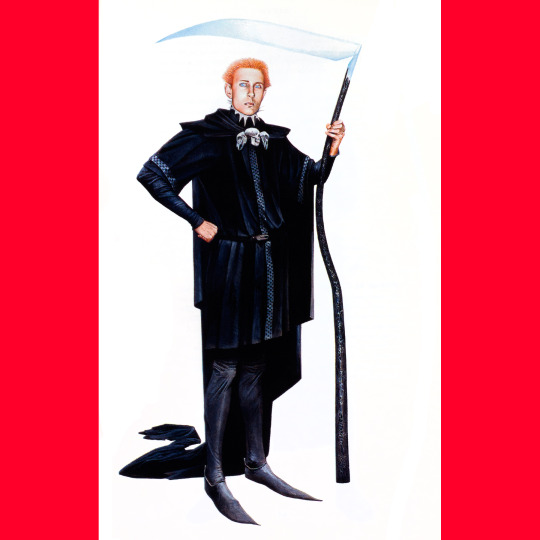

Barlowe's Guide to Extraterrestrials was well received and won a couple of awards (and a second edition, I think in ’87?). It took a little while for the sequel to emerge: Barlowe’s Guide to Fantasy hit shelves in 1996.
Even though I am not super widely read in either fantasy or science fiction, Barlowe’s fantasy book is the one I really vibe on. Maybe because it allows him to do stuff like Grendel from Beowulf and Gorice from The Worm Ouroboros. Wouldn’t have expected Gideon Winter, the antagonist from Peter Straub’s odd novel Floating Dragon to be included, but he was. Other surprises are the Psammead from Five Children and It and the Saw Horse from Oz.
One of the coolest things about these books is the fold-out size comparison charts. I love a good size-comparison (and again, this is a big feature of those Petersen’s Guides for Call of Cthulhu, and I am sure it came directly from here).
333 notes
·
View notes
Text


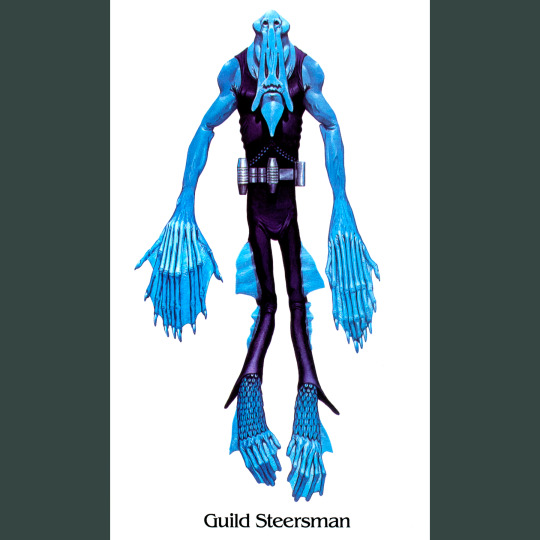

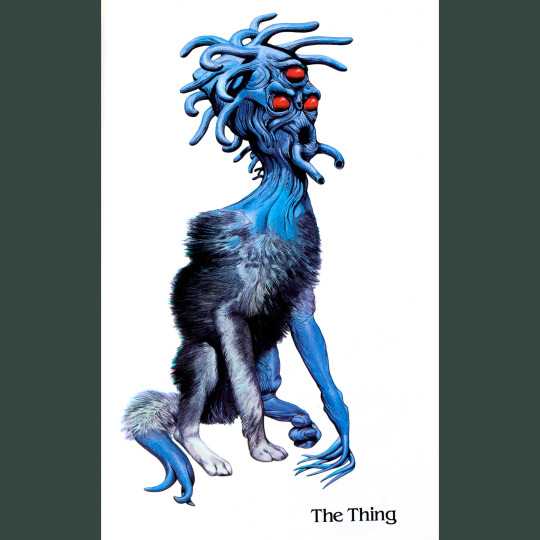
Barlowe's Guide to Extraterrestrials (1979) is a fun little book that looks at aliens from a variety of science fiction stories through the (slightly) in-universe framing of a field guide, complete with notes on ecology and biological functions.
Artist Wayne Barlowe’s selections are an interesting cross-section of the genre (I don’t recognize a lot of them, honestly) and his interpretations (of the ones I do recognize) always walk the fine line between capturing something essential that I pictured in my mind’s eye while also being surprising or unexpected in many ways. Among the beasties I did not photograph are the Overlords from Childhood’s End, the Puppeteers from Ringworld, the Izchel from Wrinkle in Time, the Masters from the Tripod books and Ursula Le Guin’s Athshean.
In a way, the Guide feels like an extension of the larger interest in fantastic art in the ‘70s, embodied most in the Gnomes, Fairies and Giants books. It, and its Fantasy companion (see tomorrow) certainly wouldn’t come out today, but for me, they’re just amazing. They gave Barlowe a whole book to draw monsters and aliens; monster and alien enthusiasts like me got a pile of rad illustrations to look at; and a stack of sci fi writers got low-key advertising for their works. Wins down the line.
Worth mentioning that this is likely a direct inspiration for Call of Cthulhu’s pair of Petersen’s Field Guides (Cthulhu Monsters and Dreamlands), right down to little nuances of layout formatting. I would bet that they were also on someone’s mind when the Ecology articles began to appear in Dragon Magazine (those started in ’83 with the Piercer).
#roleplaying game#tabletop rpg#dungeons & dragons#rpg#d&d#ttrpg#Wayne Barlowe#Barlowes Guide To Extraterrestrials
292 notes
·
View notes
Text



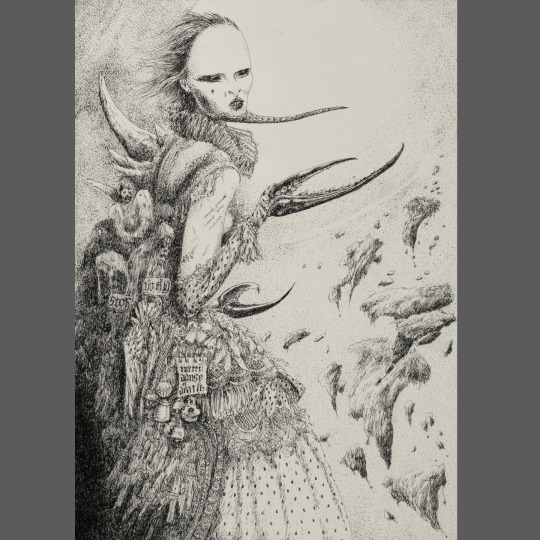

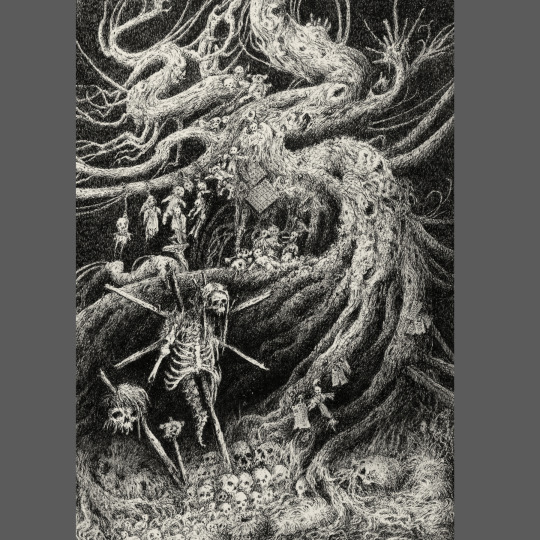
John Blanche is an absolute legend. As an artist and art director, he essentially steered the rudder of Warhammer and, through it, British fantasy art, for decades. Among a pile of important work, my favorite is probably his illustrations for the four-volume Sorcery! gamebook series by Steve Jackson.
I’m not sure how the Hollow Press edition of Voodoo Forest (2022) got on my radar, but it did (and thank goodness, because through it I found Vermis). The first version appeared in 2015 and was the product of a decade of work. This edition includes additional plates and was resequenced. The back matter says it’s the project’s definitive form.
It’s impressive! There are 46 full-page illustrations, each accompanied by a second, smaller one, and one 2-page spread. In a lot of ways, Blanche’s style seems unchanged, which is a curious thing for an artist with a career spanning multiple decades (compare to Ian Miller, who has had a number of stylistic periods). It’s strange to see his work without any direct references to the worlds of Warhammer. There are subtle, perhaps reflexive visual references, like the way the demon woman’s claw hands resemble the canon Slaaneshi demonette, or how all the secondary illustrations depict a variety of folk carrying banners. Those banners serve as cryptic titles. Many are quotes from Macbeth. I assume many others reference other works, but I haven’t quite figured them out. The doomed atmosphere of the Scottish play sort of overrides all other associations for me (though there is very little in the visuals that would make me think of Shakespeare, though there is one man in a kilt).
Taken as a whole, the thing is unsettling, a sort of dream or nightmare landscape that clearly conforms to some organizing principal, but the logic of which remains obscure. There is not much gore or violence, but violence seems imminent in nearly all the plates. I would not want to explore this particular forest, but I am glad to have it on my shelf.
101 notes
·
View notes
Text
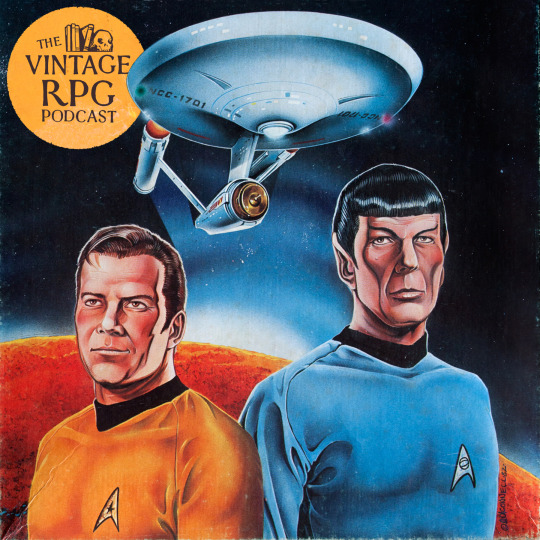
Set phasers to stun! This week on the Vintage RPG Podcast, we check out FASA’s 1982 Star Trek RPG. It’s an interesting game in it’s own right — a hack of Traveller, when it comes down to it — but is also super interesting in regards to fandom, IP canon and licensed RPGs. Climb on board as we explore these strange old worlds!
18 notes
·
View notes
Text




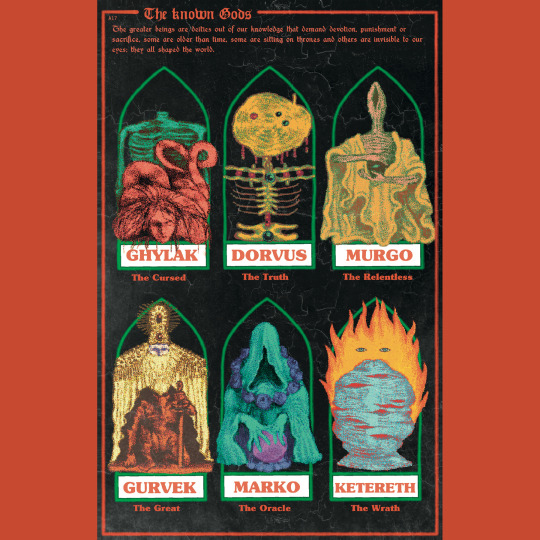


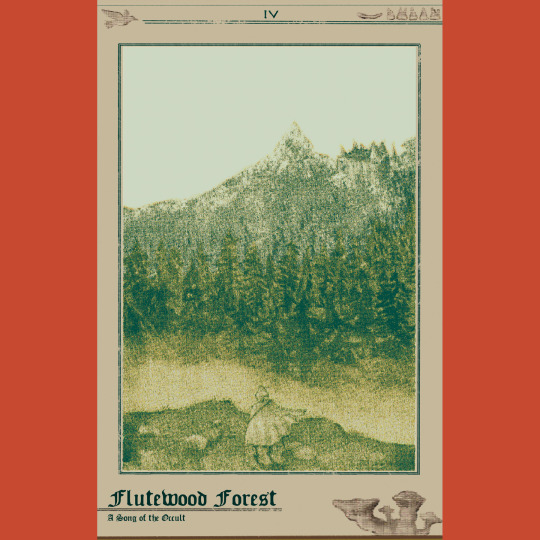

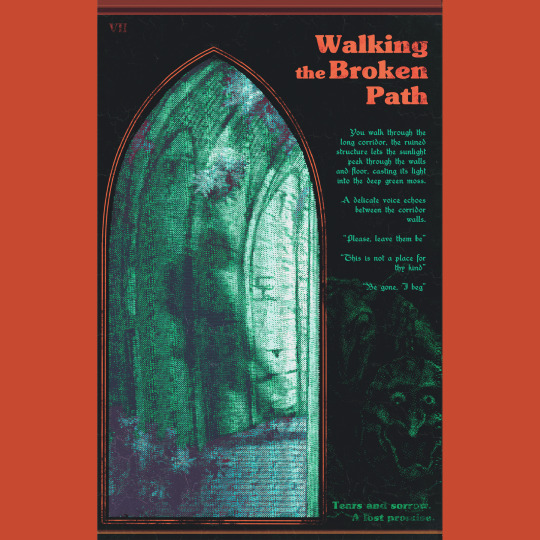
Vermis I (2023) is a narrative art book by @Plastiboo. It’s a gorgeous and darkly layered homage to a variety of influences, new and old — Souls games, old videogames like Shadowgate, more recent ones like Shadow of the Colossus, perhaps Fighting Fantasy gamebooks, perhaps Warhammer. There are many possibilities. And yet it also stands as very much its own thing, a world unto itself. The book’s central question “Which flesh is your flesh?” goes a long way in establishing the sorts of horrors we’ll find on our journey.
There are two things that really make Vermis come to a diseased sort of life. The first is the decision to arrange the book as if it were a strategy guide for a videogame that doesn’t exist. This allows for the introduction of little icons and hints at mechanical systems without committing to building them, which is an enticement to brains like mine to figure out how they MIGHT work. And by providing level maps and strats for boss fights and profiles of magic items, I wind up playing the game on a meta level, reflexively, through the act of reading. This sensation is strange and unique and made for one of the most memorable book-experiences I’ve had in a long time.
The other thing is the texture of the art, the way everything is buried under pixelation, cathode grain, moire ripples and other distortions. It unifies all the book’s visuals in a sort of murkiness that add an almost painful sense of mystery and danger and inscrutability to the narrative.
Vermis is a dark masterpiece of creeping dread, and anyone who tells you it isn’t a game to be played isn’t to be trusted.
319 notes
·
View notes
Text
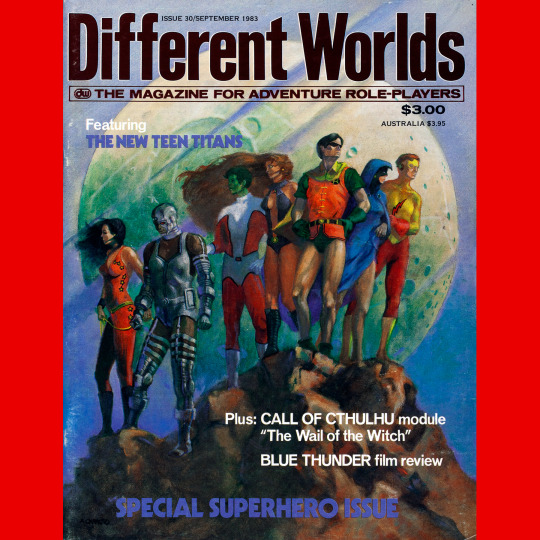
Different Worlds 30 (September, 1983). A two month gap — I feel like that at this point, the magazine was being published “intermittently.” The cover is another painting by Alan Okamoto, a rather striking group portrait of DC’s Teen Titans.
#rpg#d&d#dungeons & dragons#tabletop rpg#roleplaying game#ttrpg#Chaosium#Different Worlds#Alan Okamoto
56 notes
·
View notes
Text

Different Worlds 29 (June, 1983). And back to bi-monthly. I suspect this was deeply frustrating for readers. The cover is “The World of Pandora,” by Alan Okamoto, a much quieter composition than the previous cover. Nice light, very subtle shadows. I like that the reviews of Star Frontiers and Return of the Jedi are set at an even level of importance.
#roleplaying game#tabletop rpg#dungeons & dragons#rpg#d&d#ttrpg#Chaosium#Different Worlds#Alan Okamoto
42 notes
·
View notes
Text



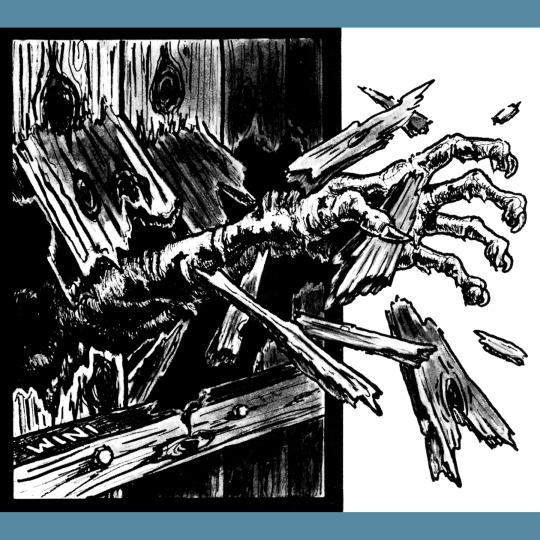
Final Challenge (1984) is the lone solo adventure in the Role Aids line. Your friend joined the Black School and now he wants to conquer the world with an army of the undead, so you have to stop him.
Fun thing 1: if the first character can’t manage and dies, there is a second character who can pick up the fight. Fun thing 2: There are only ten weeks of game time to travel the land and find a way to stop the necromancer. Fun thing 3: the hexes randomly generate their encounters. The rest is solid if unremarkable. The encounters are interesting, the story straightforward, the combat cut and dried. There is one solution, though the path to it is eased or complicated in relation to what the hexes generate. Despite this, it’s about two hours of play, max, and has next to no replay value.
Cover by Tom Kidd is fine, and I think maybe commissioned for the module. I’m neutral on Winifred Williams’ interiors, they remind me a bit of TSR’s Fantasy Forest pick-your-path books aimed at kids. And there just aren’t enough of them, to be honest. The town map is quite nice though.
56 notes
·
View notes
Text




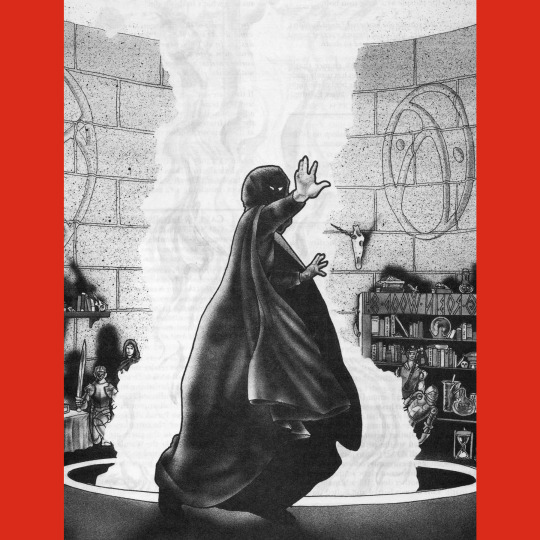
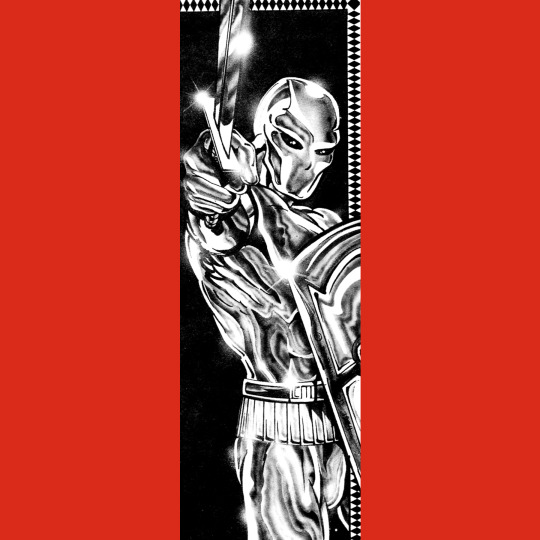
Shadows of Evil (1984) is the biggest adventure in the Role Aids line, clocking in at 80 pages plus map pull-outs. There is some source material at the front of the book for roleplaying in the Celtic world (or, I guess, the post-Roman Celtic world, more accurately) and a set of powers and items designed as a supplement for the D&D Druid class (reprinted from an earlier article in Dragon Magazine). This focus on Celts is a little jarring, as the Boris Vallejo cover is pretty generic looking fantasy, and, aside of some narrative trappings, the adventures don’t have much Celtic flavor.
There are two linked adventures. The first concerns a, well, a weird place. It was a site of worship for Dark Druids, then a Roman fort and now it is a manor that doubles as an abbey for some good Druids that seem rather Christian, really. They’ve been corrupted, though and in order to set things right, an evil artifact of great power must be retrieved. The second adventure requires the destruction of the artifact lest its use bring about the return of an evil pre-Celtic deity. To do so, the player have to travel to an evil citadel…owned by a witch-king…and throw the thing…into a pit of fire. Which seems a lot more Lord of the Rings than Celtic mythology. All of this is further undercut by pretty standard dungeon design populated by a prosaic complement of D&D monsters. I actually like the dungeons and how generic they are, but they feel real weird in the Celtic context.
Nice art throughout by Robin Wood. Very different, I think, from her work in Swordthrust.
47 notes
·
View notes
Text

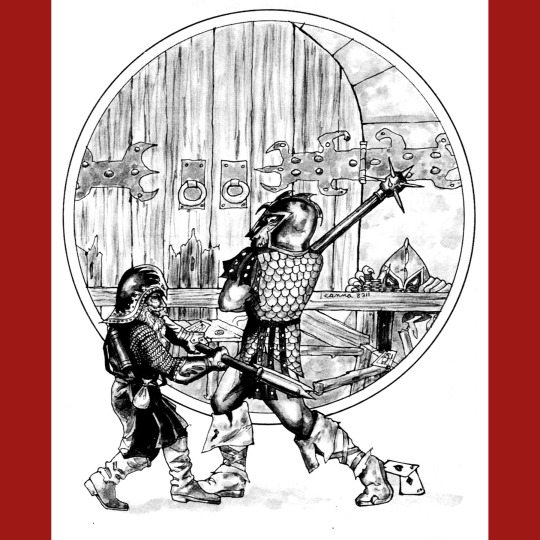
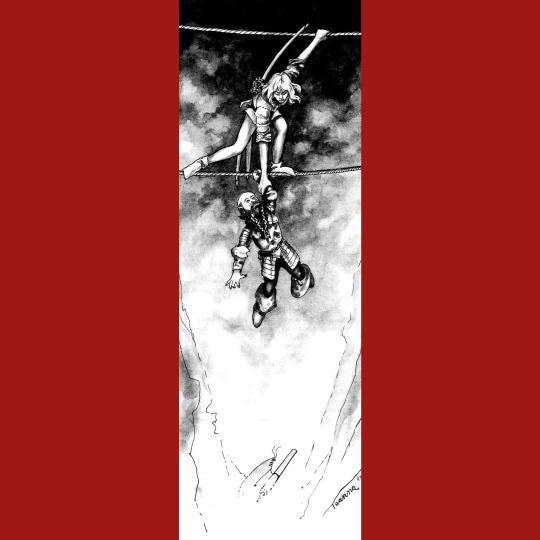
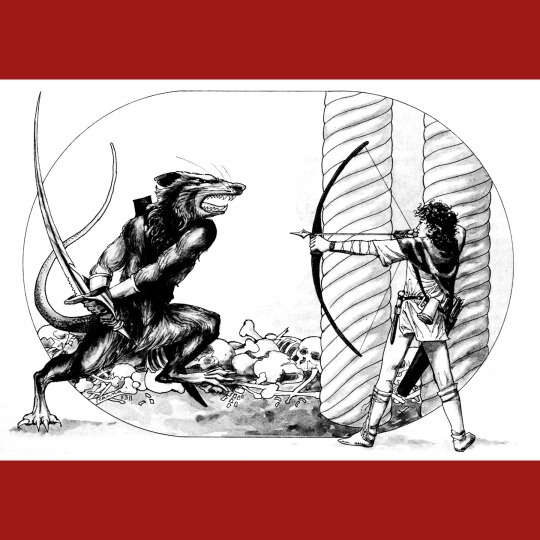
Deadly Power (1984) is similar to Evil Ruins in that it attempts to use past events — again, the schemes of royalty mixing with the diabolic — to fuel the forward motion of the adventure. This one has a magical mix of leaves that can give the eater the ability of mass charm. Powerful! But there are a bunch of limitations and requirements and eating them wrong is deadly. And the power only last as long as they’re in the eater’s digestive system. Lotta trouble for something so, uh, passing. None of that stops a handful of factions from trying to coax, cajole and murder the players into giving them the leaves.
Plot aside, the series of dungeons is OK. The primary one — a wererat warren, has the most potential but it feels somewhat unrealized here. The secondary locations, particularly the nicely designed mausoleum, feel more thought out and complete, but maybe that’s because they’re relatively brief. The maps are all solid, though.
Cover art is a fairly generic recycled piece by Janny Wurts. Interior illustrations are by Teanna Byerts. They’re pretty good! Missed opportunity for some demon drawings, but I really like the falling dwarf illustration, so I suppose it evens out.
48 notes
·
View notes